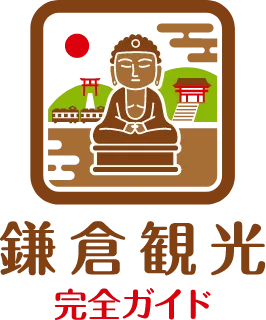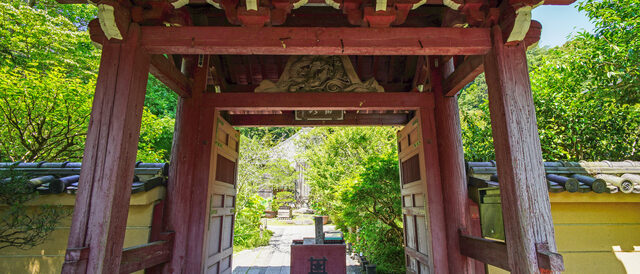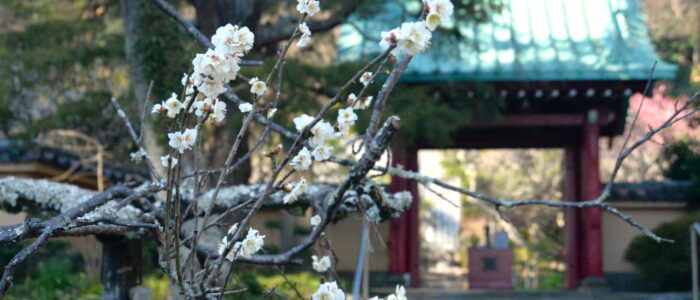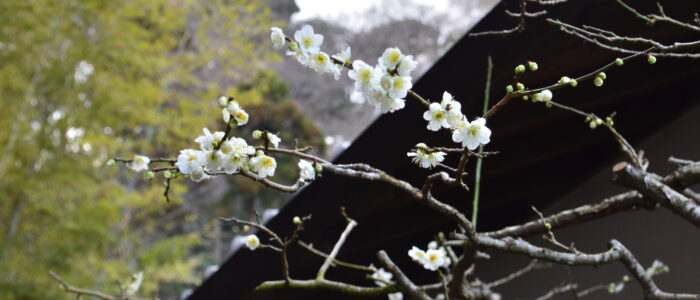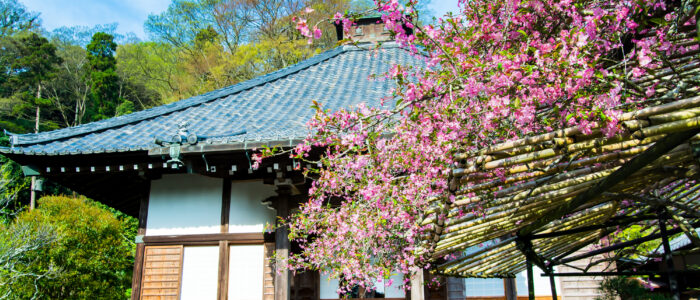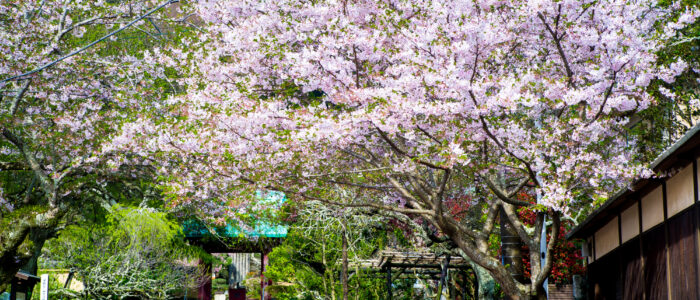Kosoku-ji Temple (光則寺)
Discover Kosoku-ji Temple (光則寺)
Tucked away in the quiet residential area of Hase in Kamakura, Kosoku-ji Temple is a historic Nichiren Buddhist temple founded in the late 13th century by Nichiro (日朗), a devoted disciple of Nichiren (日蓮). The temple stands on the former site of the residence of Yadoya Mitsunori (宿屋光則), a retainer of the Kamakura shogunate’s fifth regent, Hojo Tokiyori (北条時頼). It was here that Nichiren presented his pivotal treatise, Rissho Ankoku Ron, intertwining religion, politics, and the deep bond between teacher and disciple.
Scenic Highlights: Architecture, Nature, and Meaning
Entering the temple grounds, visitors are greeted by an abundance of seasonal blooms. Particularly stunning are the flowering crabapple trees in spring and mountain hydrangeas during the rainy season—earning Kosoku-ji its nickname as “the temple of flowers.” Inside the main hall hangs a plaque inscribed with Shiko Daiichi (師孝第一), a phrase Nichiren gave to Nichiro, emphasizing filial and spiritual devotion. The ceiling features elaborate Kamakura-bori carvings, viewable up close during special openings.
Cultural Significance and Spiritual Legacy
Kosoku-ji embodies resilience and dedication through the legacy of Nichiro, who endured persecution to uphold his faith. In front of the main hall stands a stone monument engraved with Kenji Miyazawa’s poem Ame ni mo Makezu, which reflects the integrity and sincerity central to Nichiren Buddhism. The poem leaves a quiet but lasting impression on all who visit.
Experiences and Temple Activities
Every month on the 21st (except April, August, and October), a sutra chanting session is held—open to the public with no reservation needed. Even first-time participants are welcome to engage with Nichiren teachings. The participation fee is 200 yen and includes light refreshments.
Goshuin and Unique Traditions
Kosoku-ji offers Goshudai (a type of calligraphy seal specific to Nichiren Buddhism). Please note that you may need a Nichiren-specific stamp book, and issuance may be paused at times, so it’s recommended to check in advance.
Getting There from Tosh’s Place (トシズプレイス)
Kosoku-ji Temple is about a 6–8 minute walk from the nearest Enoden station, or a 4-minute walk from the “Hase-Kannon” bus stop if arriving from Kamakura Station. The temple is typically open from 8:00 AM to 5:00 PM, but sometimes operates from 7:30 AM until sunset. There is no on-site parking, but paid parking lots are available nearby. Tosh’s Place (トシズプレイス) guests can reach the temple easily on foot, even during a casual outing.
Best Times to Visit
The spring bloom of crabapple trees and the mountain hydrangeas of early summer are major highlights. Visiting in the early morning allows for a peaceful experience with few visitors, making it ideal for quiet reflection. Those staying at Tosh’s Place (トシズプレイス) can enjoy flexible timing—stopping by in the morning or while shopping for dinner ingredients.
Nearby Attractions Within Walking Distance
Famous sites like Hase-dera Temple (長谷寺) and the Great Buddha of Kamakura at Kotoku-in Temple (高徳院) are all within walking distance. For those seeking a bit of nature, the hill behind Kosoku-ji offers a hidden trail with views of Sagami Bay (相模湾).
Who Will Love This Place?
- Those interested in Nichiren Buddhism or Buddhist history
- Flower lovers and nature seekers
- Travelers looking to avoid crowds and enjoy quiet reflection
- Visitors who enjoy slow, flexible travel at their own pace
Wrap-Up: Finding Stillness Amid History and Bloom
Kosoku-ji Temple is a rare blend of seasonal beauty, deep spiritual teachings, and medieval history. Its quiet, contemplative atmosphere makes it perfect for travelers who seek to connect with Japan on a deeper level. During a stay at Tosh’s Place (トシズプレイス), dropping in for a peaceful moment can become a meaningful part of your journey.
